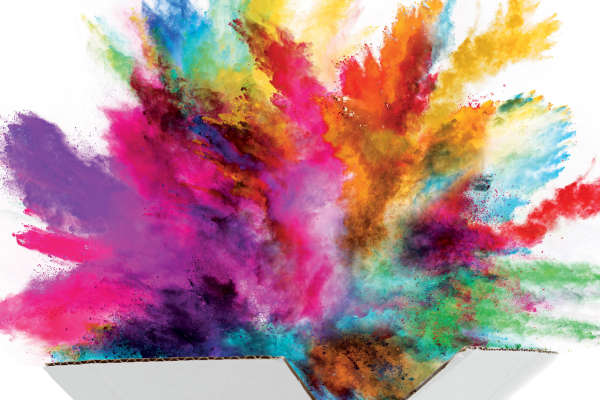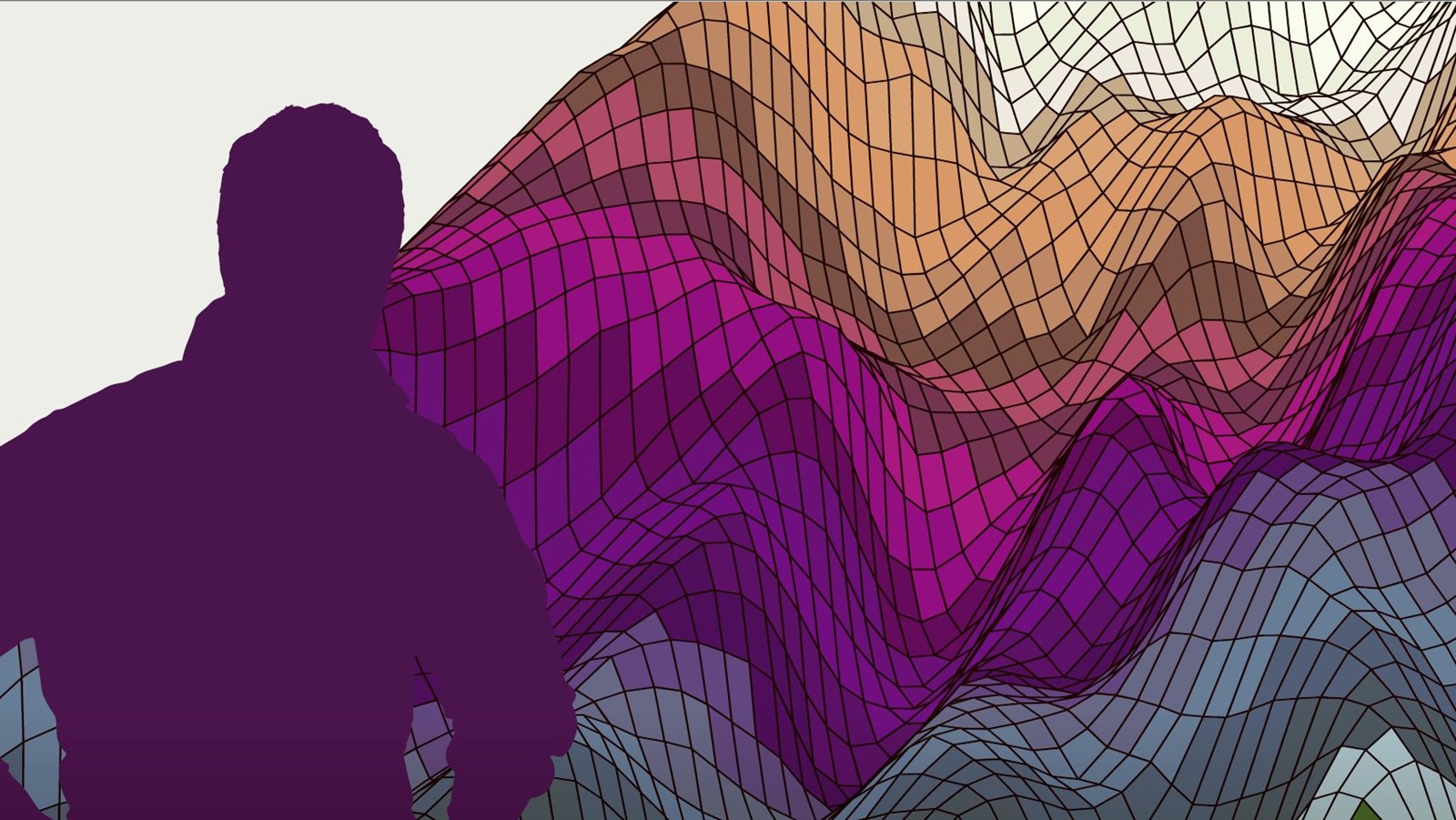Coaching is often described as a journey from point A to point B. There is usually an explicit vision or aim for the work that establishes an idea of an external and eventual destination on the ground. There is a sense that we need to be clear about our starting point, the lie of the land we will need to traverse to reach the desired end point, our plan to get there, and to be aware of what we are likely to need to support our journey along the way.
The first medieval Latin map – mappa mundi – is translated as ‘sheet of the world’, ie a flat diagrammatic representation of a landscape. We rely on our capacity for abstracting the world to help us understand and navigate the complexity of our experience and to learn from those who have charted the territory before us. Perhaps this is why the coaching field is full of useful frameworks that map the coaching process for us, and full of tools or roadmaps that help us to navigate particular challenges along the way.
However, as Alfred Korzybski famously asserted in 1933, ‘the map is not the territory.’1 Because we process the complex nature of reality through abstraction, the map may be incorrect without us realising it. It is by necessity a reduction of the actual ground so cannot contain all the information of the original, and it needs to be to some extent interpreted, a process that can lead to mistakes.
Moreover, as Angela Dunbar writes: ‘Goals are fluid and evolve and change during the coaching process’,2 so we are also to some extent engaged in re-mapping our course as we make the journey.
The landscapes we are exploring may equally be the unseen, internal map of the client, the mental maps created from childhood and beyond, and the unconscious maps we hold of the systems we are a part of. How then do we navigate the coaching process so that we are neither all at sea with no reference points, or overly constrained by a too-prescriptive formulaic plan that fails to recognise that ‘the map is not the territory’?
As counsellors and therapists, our training has ensured that we have explored in depth theoretical and psychological models of human development and functioning, and usually we have explored our own internal maps in counselling or therapy, to understand more about our own inner landscape and motivation. We also have experience of guiding our work in the context of an ethical framework and the discipline of reflection in regular supervision. We will usually have developed our capacity for ‘being’ with the client and understand that the therapeutic relationship is a vital foundation. Depending on our experience, theoretical approach and the context we wish to work in, we might be more, or less, equipped to move into the field of coaching. How do we determine where we are on the coaching map?
Coaching competencies developed by coaching bodies such as the European Mentoring and Coaching Council (EMCC), The International Coaching Federation (ICF), and the Association for Coaching (AC), serve as route maps into a more proactive approach where, for example, the coach ‘describes and applies a range of methods for building commitment to outcomes, goals and actions’.3 These competencies also prescribe (among other areas) self-understanding and rigour of reflection on experience and practice and, increasingly, a focus on ‘being fully present and flexible with the client, “dancing in the moment”’.4 They outline the importance of the specific competencies needed for coaching with executives or in organisations where contracting might be more complex, an understanding of leadership issues, and that a systemic approach is necessary.5 A recent paper from the Future of Coaching Collaboration (which emerged from the Coaching at Work-led accreditation forum), provides a baseline of principles and practices for professional executive coaching in organisational settings, with an appendix setting out the expectations of the contributions of different stakeholders to the coaching process.6
Such competencies and principles help us map our current level of ability as counsellors who wish to coach, or more experienced practitioners. They provide a road map for our development, and, through training and individual accreditation schemes, provide an external assurance of our competence to practise.
Coaching frameworks such as the TGROW model7,8 are often a base camp in training, and function as a kind of specific ordnance survey of our sessions as we learn to coach, helping us to identify the overarching Theme, a purposeful Goal for the session, the mapping of the Reality of current experience, a charting of the possible Options or ways forward, and finally wrapping up with a decision about what Will be done. Despite the acronym, this kind of framework is not linear, but it does help the coach to keep in mind the need to visit these points along the journey to ensure that actions are apposite and well founded.
Coaching tools, which we might compare to smaller specific trail maps illustrated in a guidebook, often contain very important instructions to ensure that we stay on the path, while acknowledging that the territory may vary somewhat, depending on the circumstances. While I don’t always use the same tools with every client, I do have a number of effective favourites, such as Covey’s circles of concern and influence,9 drawn as a simple diagram to enable the client to map their current concerns into different areas according to levels of influence. It is often a relief to the client to acknowledge what can’t be changed and therefore must be accepted; this frees energy to identify the actions that are possible.
Other maps are a little more complicated to explain, and some clients ‘get’ them more quickly, while others remain bemused. I find ski maps hard to read and interpret, struggling to distinguish between lifts and slopes and I can’t seem to bring a picture of the landscape of the mountains to mind when I look at the map; it remains stubbornly diagrammatic, telling me nothing. My partner on the other hand seems to look at the ski map and see the terrain in his mind’s eye. At my request, this winter he drew me a ski map of the slopes, using our own name for the terrain (informally developed as we skied there with our children over the years). On his hand-drawn map, the downward slopes became the ‘first thing in the morning run’, the ‘family run’, and the dreaded ‘goat’ (precarious and difficult). The lifts became known as the ‘sofa chairlift’, the ‘cold chairlift’, and the ‘hard two-seater’ (for obvious reasons). Tracing the same routes as the original, but with a personalised version, helps construct a picture that I can navigate on my own. When introducing a tool to a client, I am hoping that it will inform and normalise an issue, offering reassurance that others have gone before, providing guidance on the past or the present, and identifying restorative practices or paths that form a better way to achieve their hopes and goals. As with my customised ski map, they begin to give the paths their own names. Sometimes this invitation is inherent within the tool; for example, Daniel Ofman’s ‘core qualities quadrant’® enables us to map an inherent quality or strength which, when inflated or overused, becomes distorted into a pitfall. Ofman also encourages us to learn from what we are averse to in others (our ‘allergy’) ‘because they have too much of what it is that we need most.’10 Such a ‘map’ allows us to use our own words and step back in order to see the territory differently to gain new insights.
Some maps are not so explicitly shared in detail with the client. The principles and purpose of the approach are explained, but the routes are held in mind by the coach to guide the choice of questions that may be most likely to generate the best thinking in the client. The Thinking Environment® partnership process, developed by Nancy Kline,11 is a beautiful example of this. A deceptively simple (though challenging and affirming) process for the coachee, which requires careful choices of questions in the second part of the process, in order to help the client replace specific limiting (and personal to them) assumptions with liberating assumptions. This takes time for the coach to learn to do well, in a way that honours the utterly unique landscape of the client’s thinking. As an application, it sits within the 10 components, that, when present, have been observed to support the best independent thinking in others, one of which is ‘ease’, defined as ‘a freedom from internal rush and urgency’.12
This illustrates a key element in using maps effectively: the easeful presence of the coach prioritises a careful attendance to the coachee, holding the map with reverence for its integrity, but lightly and, as it were, to the side.
This has resonance too when we are exploring the often unconscious maps of the systems we belong to: our families, friendship groups and organisations. The use of ‘constellations’, further developed by John Whittington for coaching, involves creating what can be referred to as ‘living maps’, an opportunity to create externally something that represents the inner image we are carrying within us, as ‘things that were previously unspoken and “unknown” appear as fresh information and insight emerge naturally once we can see the inner map externalised’.13 These maps can be created in one-to-one coaching, using small objects on a tabletop to represent different people or elements within the boundaries of the constellation. Specific phrases, carefully chosen, guide the use of this map too. We invite the client to create the map just as it is, without wanting it to be different or better. I use this mapping process when clients want to explore a particular issue within their organisation or family. The mapping is done by the client and the coach attends carefully, does not make assumptions or interfere or suggest a way forward. Instead, the client is encouraged to ‘stand in the truth of what is’ and then the next steps may become apparent.
How do we establish and navigate the boundaries of our practice if we are offering counselling and coaching as separate services or using an integrated framework?
It’s important not to shy away from the thorny issue of whether and how a boundary could or should be drawn between counselling and coaching. It is relatively clear that a coach without psychological training should not be practising as a therapist. If, however, as a practitioner you are dual trained in both disciplines, what then? There is, as I have written elsewhere, a swathe of shared territory between the two professions.14 It depends, as almost always everything does, on the contract. You may have contracted to coach but you reach a sudden impasse or landslide in the territory. You know how to navigate this as a therapist but would this change in navigation represent a conscious ethical choice made together or would you be wandering off the path into areas that you have not contracted to enter? Just because you can take the client through it does not mean that you should. What you do then might depend on the size of the difficulty encountered and whether there is a desire or ability on the part of both parties to re-contract for some therapeutic work. It will also depend on whether a third party is paying. A lack of clarity in the contracting is like setting off with an inadequate map and no compass. When the mist comes down you might have to sit tight and wait it out if you have no other means to work out where you are on the map. You may need to revisit your ethical framework (BACP’s Good Practice in Action resources have a useful decision making process15) and, in my experience, there are times that only in supervision can the mist recede, holes in the contract become clear and the map may then be re-drawn with the client to proceed safely and effectively.
If our contract is for counselling, some coaching tools might be pertinent and move the work forward in a useful way. However, it is important to establish whether we are taking flight into coaching solutions too quickly without first understanding the pitfalls and crevasses of the territory which could trip us up if the proper assessment of the issues has not taken place. When integrating counselling and coaching, it is essential to have access to a supervisor who understands and has experience in both professional approaches. It can be helpful to consciously work within an integrative framework such as that developed by Passmore for executive coaching.16 Alternatively, personal consultancy17 provides a map to consciously integrate processes associated with counselling and coaching, and a visual representation to illustrate your approach to clients.
When using an integrated framework we need to be clear whether our starting point is coaching (only going back into therapeutic work in the service of going forward), or whether we always counsel first, on the grounds that more stability is required before we can coach.
When we encounter the equivalent of the ubiquitous (though actually apparently never found on old maps) edge-of-the-map script, ‘Here be dragons!’, it may be a warning not to go any further, just yet or at all. It depends on the contract and context for the work, the complexity or depth of the issue, and the competence level of the practitioner. It may turn out to be territory that is feared but that can be traversed. To borrow from mindfulness practice, we need, as Jon Kabat Zinn explains, to ‘be like the explorer, the person who wants to map a new and hitherto undiscovered terrain, someone who is interested in the lie of the land in general, as well as its particular crags and valleys, wanting to know its patterns, the places of barrenness and fertility, the smooth ground and the jagged rocks’.18 Treasure can be found in the previously avoided darkened places. We might proceed here, if this is part of our contract, with caution and an open mind. We can hold up the light through creative and incisive questions and, through working with metaphor, the richness within what has previously been seen as a treacherous place, can be discovered. It is equally important to encourage the client at times to stop and enjoy the view. Just as we do not want to rush past the hidden resources in our haste to reach the destination, neither do we want to fail to take in the grandeur of the views on the journey, which can represent unconscious competence or unacknowledged strengths that are an essential part of sustaining change.
Maps are both taken off the shelf of our coaching knowledge and training and are also something we actively create with the client. As soon as we begin to traverse the territory, using our map as the guide, if we keep an open mind we will see that the client has a unique perspective and that what we encounter varies with each person we work with.
Coaching then is not just about rushing quickly to the destination. At times, ‘the real voyage of discovery consists not in seeking out new landscapes but in having new eyes’.19
Carolyn Mumby is a coach-therapist, supervisor and trainer in private practice in London. As well as coaching individuals, and leaders in organisations, she designs and delivers training and provides individual and group mentoring to counsellors who wish to coach. Carolyn is also trained in using the Thinking Environment® to enable organisations to access the independent thinking of their people.
More from Coaching Today

Navigating client diversity: why coaching needs formulation
Open article: How do we respond to the unique and idiosyncratic needs of our clients while also working within recognised frameworks? Sarah Corrie and Louise Kovacs present the case for applying formulation in a coaching context. Coaching Today, April 2017

Coaching for health: why the time is now
Open article: Following the publication of her new book, 'Coaching for Health', author Jenny Rogers explains why a coaching approach by our healthcare professionals benefits clinicians and patients alike. Coaching Today, January 2017

The sports coach meets the executive coach: what can we learn from sports coaching?
Open article: In the first of this two-part series, Erik de Haan and Pat McCarry review the role of the contemporary, elite sports coach and consider the skills that might be realistically applied to coaching in other contexts. Coaching Today, October 2016
References
1 Korzybski A. Science and sanity: an introduction to non-Aristotelian systems and general semantics. New York: Institute of General Semantics; 1933.
2 Dunbar A. Clean coaching: the insider guide to making change happen. New York: Routledge; 2017.
3 European Mentoring and Coaching Council. EMCC competence framework v2: capability indicator 90; September 2015. [Online.] www.emccouncil.org/webimages/EU/EIA/emcc-competence-framework-v2.pdf (accessed May 2017).
4 International Coach Federation. Core competencies: ICF competency 4. [Online.] www.coachfederation.org/credential/landing.cfm?ItemNumber=2206&navItemNumber=576 (accessed May 2017).
5 The Association for Coaching. AC coaching competency framework; June 2012. [Online.] http://www.associationforcoaching.com/media/uploads/Coaching_Competency_Framework_AC_.pdf (accessed May 2017).
6 Coaching at Work. Framework for professional executive coaching in organisational settings. A Future of Coaching Collaboration guidance document; March 2017. [Online.] http://www.coaching-at-work.com/wp-content/uploads/2016/12/FCC-Guidance-Document.pdf (accessed May 2017).
7 Alexander G, Renshaw B. Supercoaching. London:Random House Business Books; 2005.
8 Whitmore J. Coaching for performance. London and Boston: Nicholas Brealey Publishing; 2009.
9 Covey S. Seven habits of highly effective people. London: Simon and Schuster; 2004.
10 Ofman D. Core qualities and the core quadrant®. Core Quality International; 2013.
11 Kline N. More time to think: the power of independent thinking. London: Cassell; 2015.
12 Time to Think. The ten components; 2012. [Online.] http://www.timetothink.com/thinking-environment/the-ten-components/ (accessed May 2017).
13 Whittington J. Systemic coaching and constellations: an introduction to the principles, practices and application. London: Kogan Page; 2012.
14 Mumby C. Working at the boundary. Counselling Children and Young People 2011; December: 14–19.
15 Gabriel L. Ethical decision making in the context of the counselling professions. BACP Good Practice in action. Lutterworth: BACP; 2016.
16 Passmore J. Excellence in coaching: the industry guide. London: Kogan Page; 2010.
17 Mumby C. Personal consultancy: a grand design? Coaching Today 2016; July: 5–10.
18 Kabat-Zinn J. Foreword in Williams M, Penman D. Mindfulness: a practical guide to finding peace in a frantic world. London: Piatkus; 2011.
19 Attributed to Marcel Proust 1871–1922.
